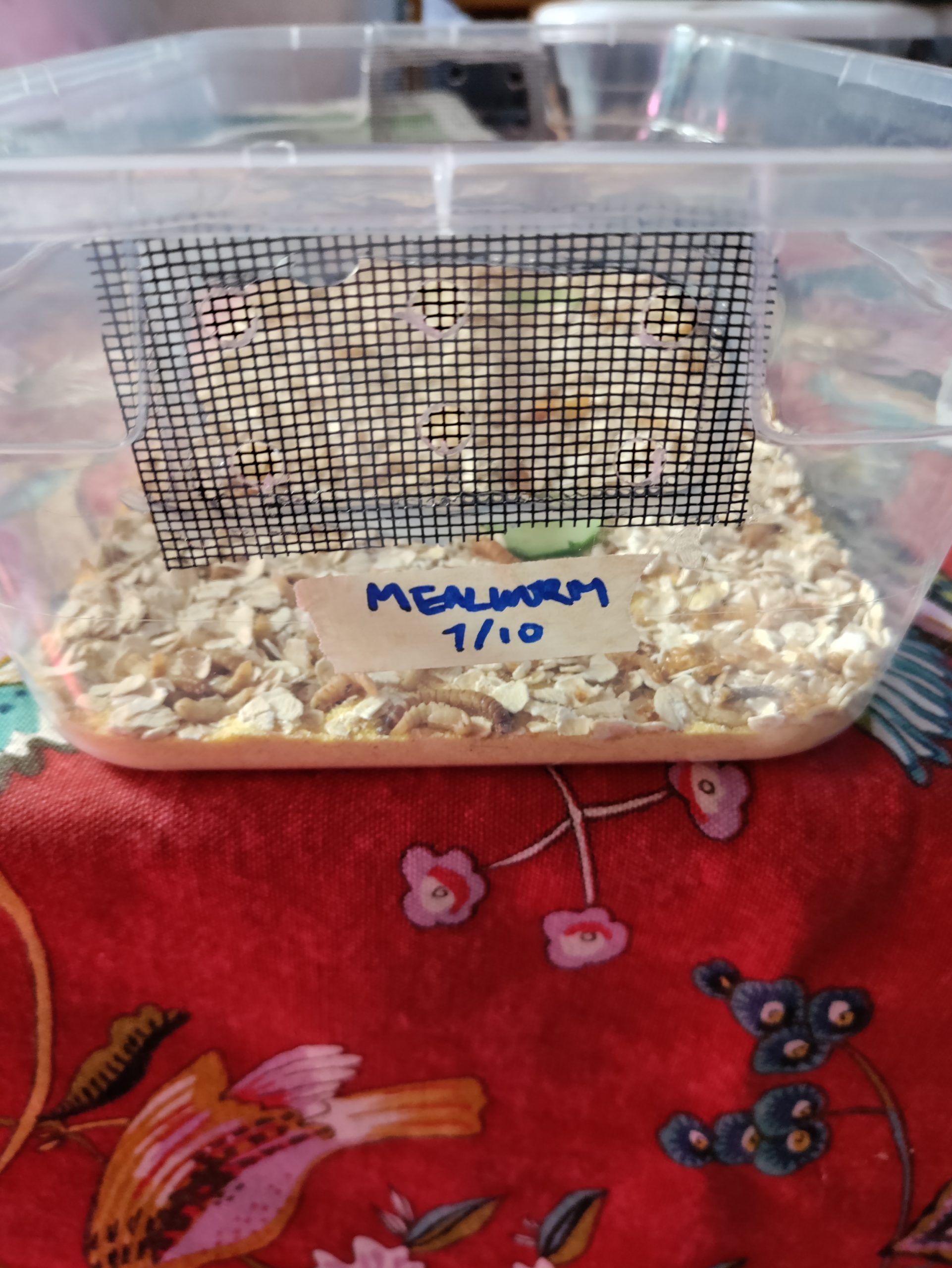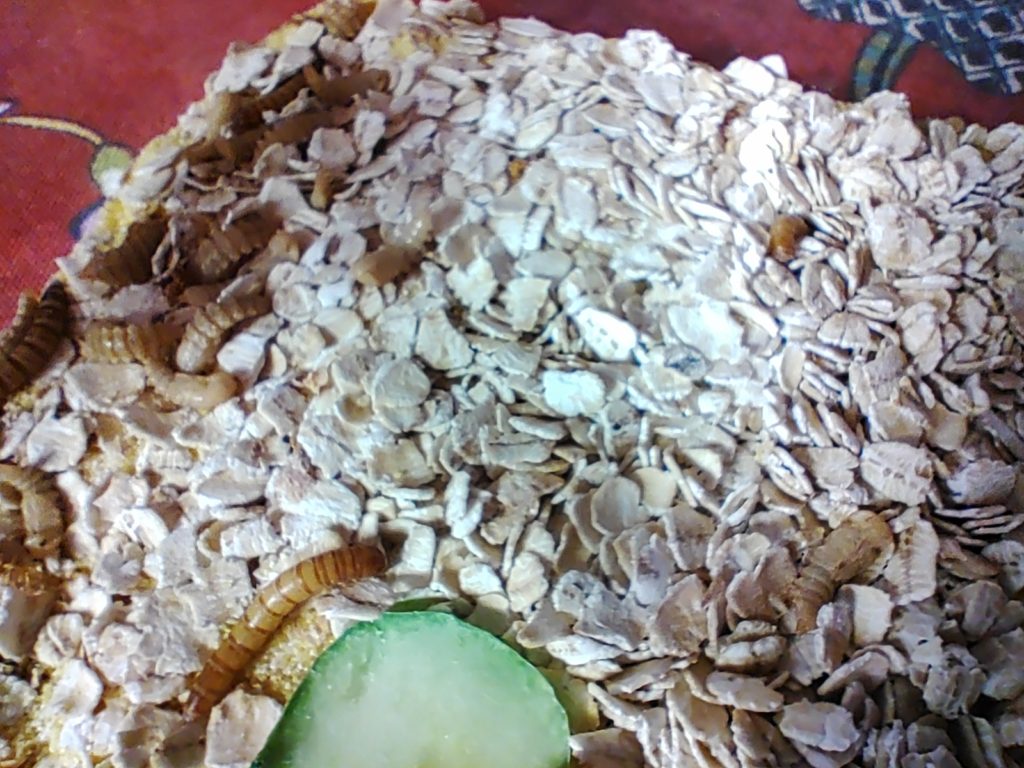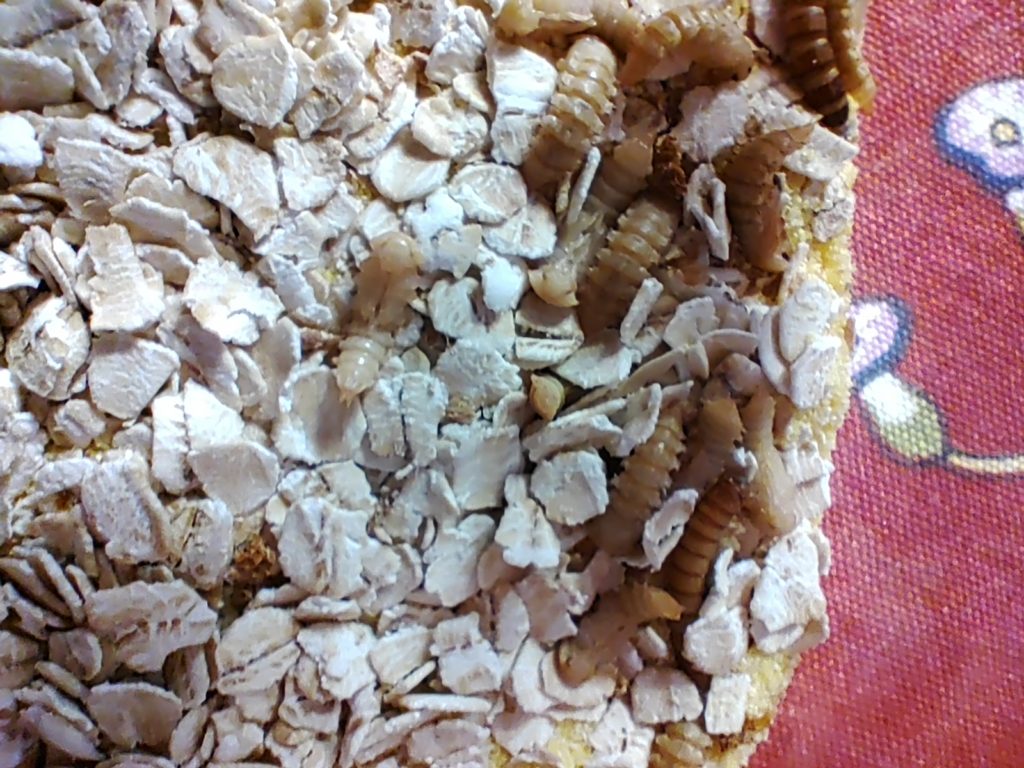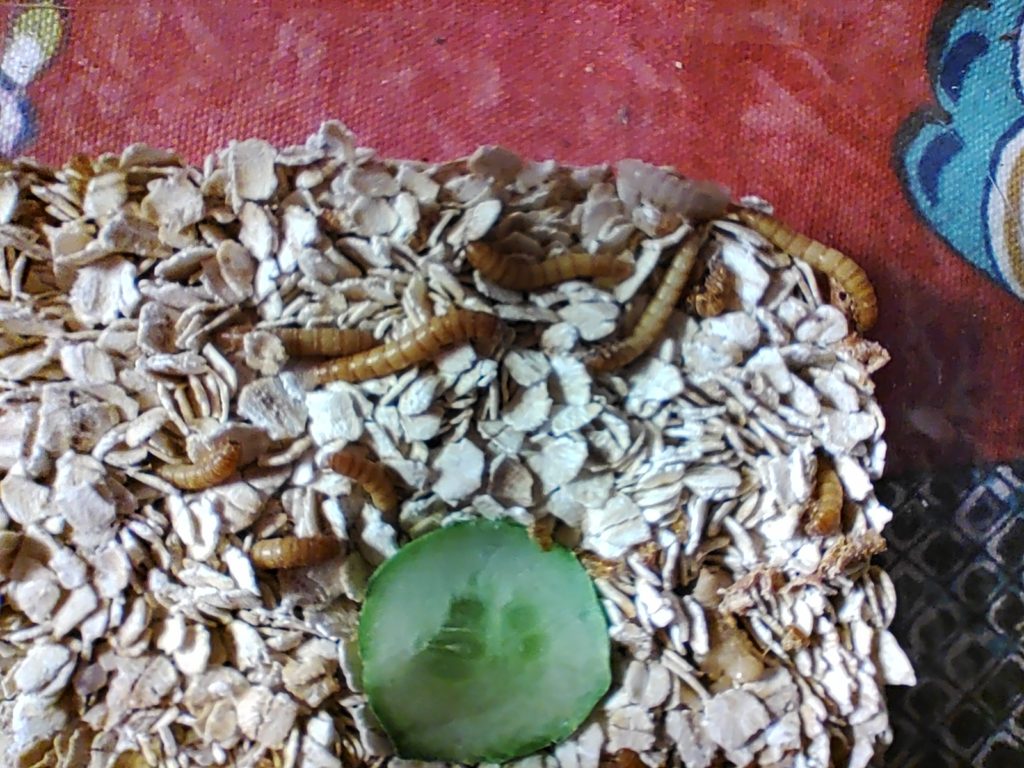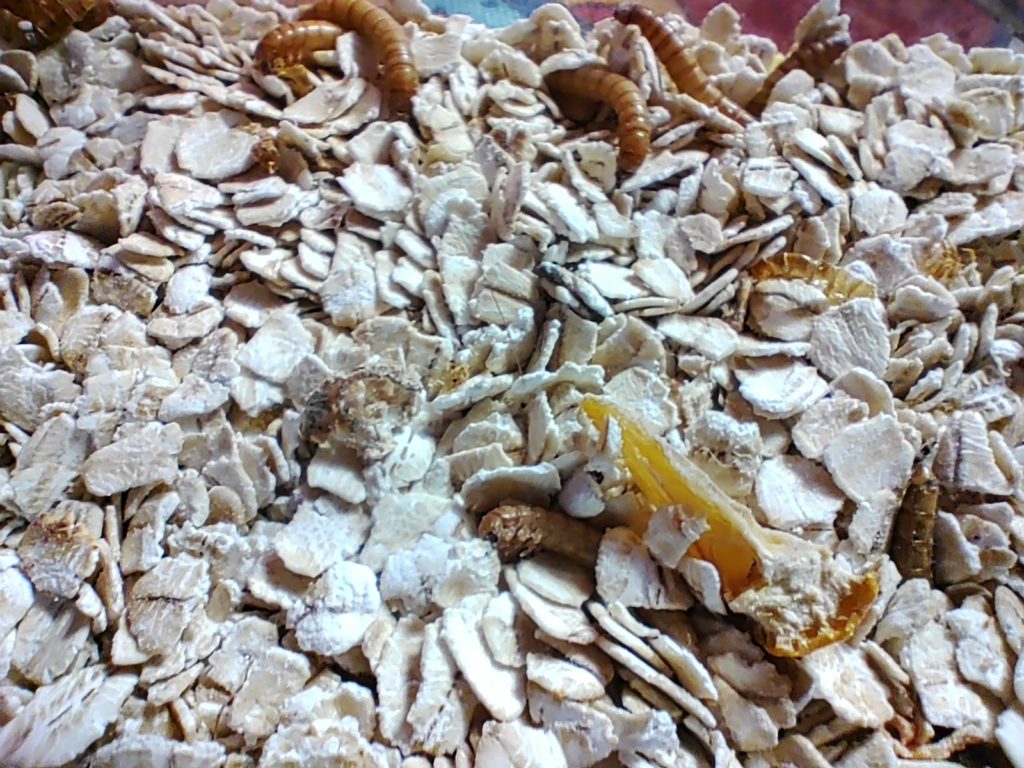Mealworms are the insect food I’m most familiar with, having owned several anoles and house geckos as pets as a child. I was not well informed on how to raise or care for the mealworms or the reptiles, and kept the mealworms in a deli dish in the refrigerator, packed in bran. I eventually found a book on reptile keeping that explained the concept of gut-loading insects to improve their nutritional value, but this was years after I had owned one of these small reptiles, and I’ve never returned to them since. While I’ve owned a Northwest alligator lizard and a five-lined skink (both wild collected) in my adult years, I fed them crickets rather than mealworms, and managed to keep both of those reptiles healthy and well fed on gut-loaded meals until they were released back into the wild.
The mealworm ranch is different than my first experiences with them. Rather than keeping them in their larval stage (“worm” form) as long and conveniently as possible for use as feeding purposes, I’m trying to encourage mine to pupate into beetles and breed so that I’ll have lots of future generations of mealworms to sustain the vivarium. Giving them lots of food and a moisture source is all that’s really needed to make this happen.
Since putting them into their ranch about 2 weeks ago, about a dozen worms have pupated. I’ve been arranging them into one corner for ease of counting as I find them, but am otherwise just letting them pile up and be left alone.
Mealworms are extremely lazy and boring to watch. They barely move. Even when picked up, rather than thrashing about they tend to just slightly curl, indicating that they are alive but not conveying much more than that. Staring across the bed of their ranch, knowing there are roughly 100 mealworms buried in there, the surface of the meal seldom even moves. I suppose there is not much need for movement when you literally live in food. Their bed of corn meal and rolled oats is likely to last months on end, and should provide for generations of worms-to-be.

